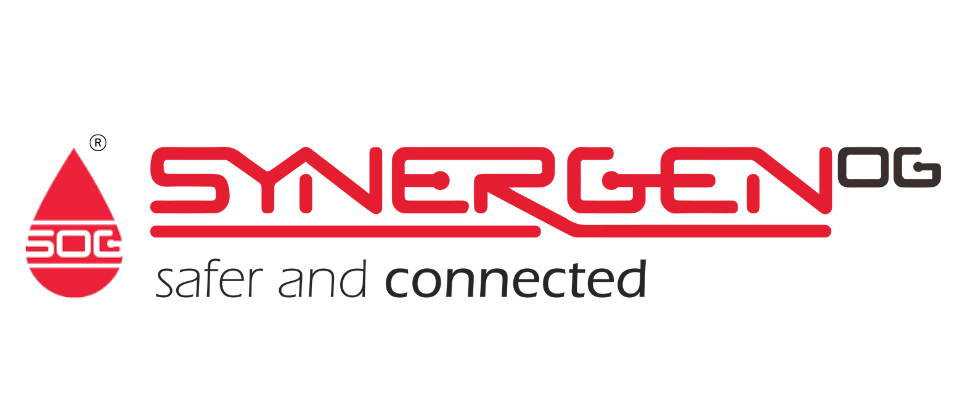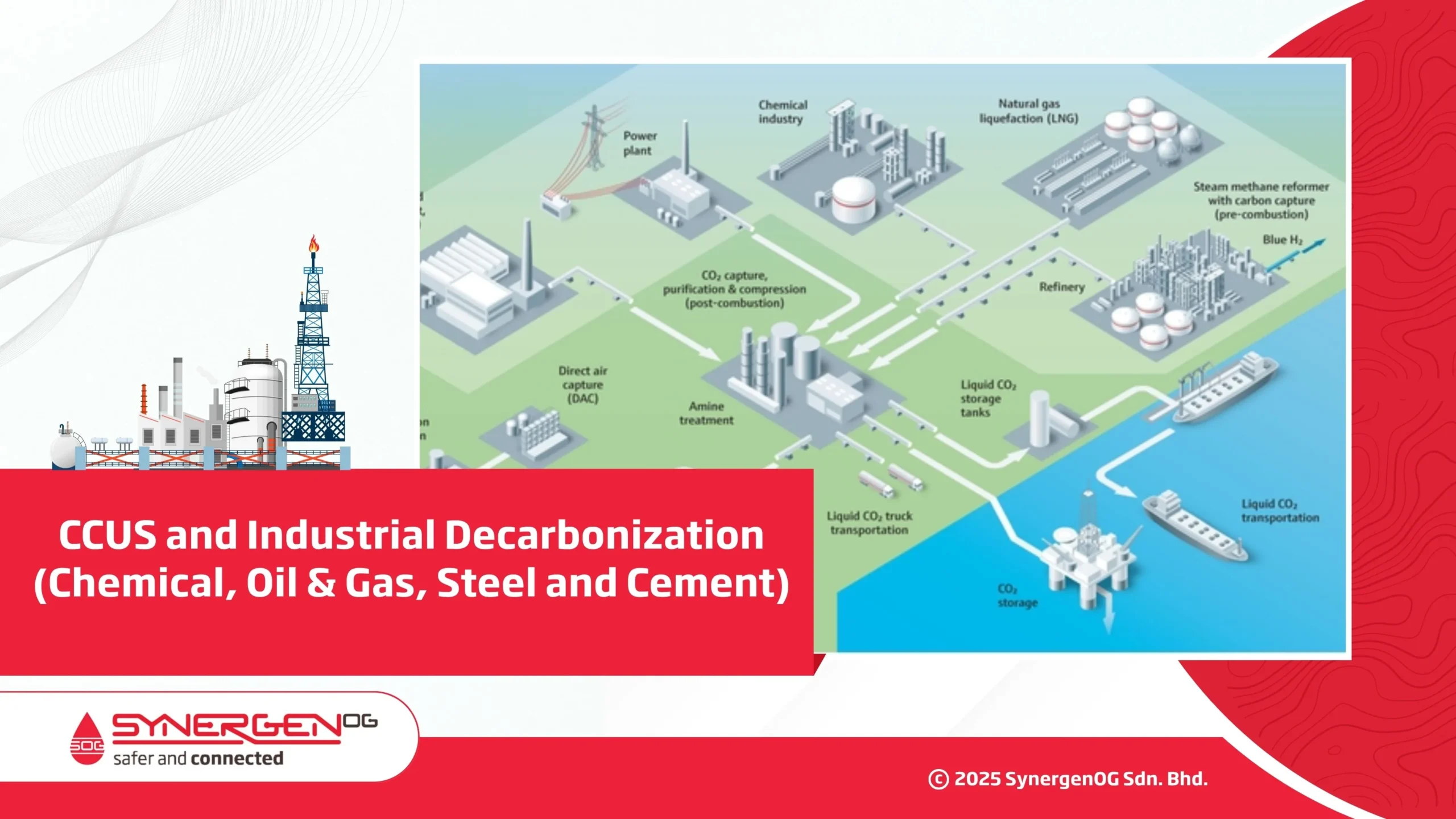| Summary: By capturing CO₂ from industrial processes and utilizing, CCUS offers a practical path to deep decarbonization. But as deployment expands, safety and transparency must remain top priorities. This article explores how CCUS is transforming heavy industry while emphasizing the critical need for rigorous oversight and public trust to ensure lasting, responsible progress. |
Heavy industries—such as chemicals, oil & gas, cement, and steel —are responsible for nearly 22% of global greenhouse gas emissions, with the steel industry alone accounting for approximately 7–9%. Decarbonizing these sectors is challenging due to their reliance on high-temperature processes and fossil fuels.
Carbon Capture, Utilization, and Storage (CCUS) emerges as a pivotal solution. By capturing CO₂ emissions at their source and either storing them underground or repurposing them, CCUS offers a viable pathway to reduce industrial carbon footprints without necessitating complete overhauls of existing operations.
As of 2024, over 700 CCUS projects are in various stages of development worldwide, with a projected annual CO₂ capture capacity of approximately 435 million tonnes by 2030. This growth underscores CCUS’s potential in helping industries meet net-zero targets.
Industrial Sector-Wise Role of CCUS
1. Chemical Industry
The chemical industry plays a central role in the global economy, but it also contributes significantly to CO₂ emissions. Key products like ammonia, methanol, and ethylene are produced through energy-intensive processes that release large volumes of carbon dioxide. For example, ammonia production alone accounts for over 1.8% of global emissions, largely due to hydrogen generation using natural gas.
CCUS is one of the most effective tools to reduce these emissions at the source. In ammonia and methanol plants, CO₂ is released in highly concentrated streams, making it easier and more cost-effective to capture. Once captured, the CO₂ can be compressed and stored underground or converted into valuable products such as urea fertilizers, synthetic fuels, or construction materials.
What makes CCUS especially promising for the chemical sector is its alignment with the hydrogen economy. Many chemical processes rely on hydrogen. When hydrogen is produced from fossil fuels and paired with CCUS—often referred to as blue hydrogen—it enables a drastic reduction in carbon intensity without changing the core manufacturing process.
Read: Industrial Uses of Hydrogen
Additionally, CCUS supports a circular carbon economy by capturing CO₂ and reusing it instead of letting it escape into the atmosphere. This approach closes the carbon loop and supports more sustainable industrial growth.
2) Oil & Gas
The oil and gas industry remains a major source of global CO₂ emissions, contributing to both direct combustion and process-related outputs across upstream, midstream, and downstream operations. To align with international climate targets, operators are increasingly turning to Carbon Capture, Utilization, and Storage (CCUS) as a viable pathway to decarbonize operations while maintaining energy security.
Key Applications of CCUS in Oil & Gas

- Enhanced Oil Recovery (EOR)
- Captured CO₂ is injected into old oil reservoirs to boost production
- Over 300 million tonnes of CO₂ have been stored globally via EOR
- Common in the U.S., Canada, and the Middle East
- Upstream Decarbonization
- CO₂ is removed from high-CO₂-content natural gas during processing
- Common in gas-rich countries with large processing facilities
- Downstream Applications
- Refineries use CCUS in hydrogen production and flue gas treatment
- Captures emissions from boilers, furnaces, and reformers
In upstream operations, CO₂ is captured from gas processing facilities, especially where raw natural gas contains high levels of carbon dioxide. In downstream refining, CCUS is integrated into hydrogen production units and flue gas systems to capture emissions from boilers and furnaces.
Also Read: Hydrogen Facilities & Safety Hazards
A critical innovation reshaping the sector is the production of blue hydrogen—hydrogen generated from natural gas with integrated carbon capture. Blue hydrogen provides a low-carbon fuel alternative for both internal use (such as refinery heating) and external distribution to clean energy markets. According to the IEA, blue hydrogen can reduce lifecycle emissions by up to 85–90% compared to conventional grey hydrogen.
Countries leading in Oil & Gas CCUS Projects
- Saudi Arabia: Aramco’s Jubail hub aims to capture 9 million tonnes CO₂/year by 2027
- United States: Federal support includes $1.7 billion in new CCUS funding
- Norway: Northern Lights project expanding capacity to over 5 million tonnes/year by 2028
3. Steel Industry
The steel industry accounts for 7–9% of global CO₂ emissions, making it one of the most carbon-intensive sectors globally (World Steel Association). Traditional blast furnace-basic oxygen furnace (BF-BOF) routes depend on coking coal, emitting large volumes of CO₂.
CCUS offers a vital solution for decarbonizing steel. CCUS can be retrofitted to capture flue gases from blast furnaces and integrated into emerging technologies like Direct Reduced Iron (DRI) processes, especially when fueled by natural gas or hydrogen.
Key pilot projects include:
- LEILAC Project (EU) – Demonstrates CO₂ capture from cement and lime production, scalable for steel.
- SSAB’s HYBRIT (Sweden) – While using green hydrogen, the project includes CCUS pathways for transitional stages.
With limited electrification potential for high-temperature processes, CCUS remains essential for deep decarbonization of steel plants worldwide.
4. Cement Industry
Cement contributes to nearly 8% of global CO₂ emissions, primarily due to calcination—the chemical breakdown of limestone (CaCO₃) into lime (CaO) and CO₂.
Even with energy efficiency and clinker substitution, process emissions are unavoidable. That’s where CCUS in cement production becomes vital. Technologies like oxy-fuel combustion, calcium looping, and amine-based absorption can capture up to 90% of CO₂ emissions at cement plants.
Notable examples:
- Norcem (Norway): A Heidelberg Materials project aiming to be the world’s first full-scale cement CCUS facility by 2025.
- CarbonCure (Canada/US): Injects captured CO₂ into fresh concrete, strengthening it while storing carbon permanently.
As global infrastructure demand rises, CCUS-ready kilns and regional carbon hubs are emerging in India, UAE, and North America, offering scalable solutions.
Conclusion
CCUS is already helping heavy industries take real steps toward industrial decarbonization, but safety must stay front and center. From capturing CO₂ to transporting and storing it deep underground, every part of the process needs careful planning and oversight.
Ongoing CCS/CCUS safety studies help identify risks early and ensure that operations run smoothly and responsibly. As more companies turn to CCUS, committing to safe, transparent practices will be key to building public confidence and making lasting progress in the fight against industrial emissions.




